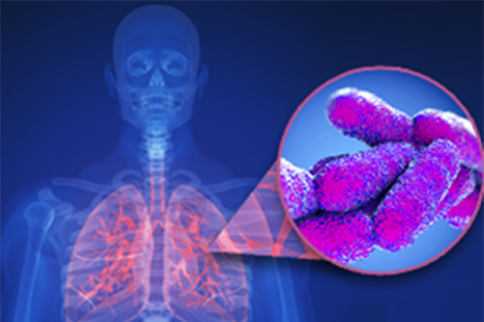Legionnaires' Disease Information
Legionnaires’ disease, also known as legionellosis, is an infectious disease that affects up to 20,000 people in the United States each year. Some people can be infected with the Legionella bacterium and have only mild symptoms or no illness at all. The fatality rate of Legionnaires’ disease has ranged from 5 to 30% during various outbreaks. Common symptoms can include: shortness of breath, productive cough, diarrhea, high fevers, weakness, body aches, headaches, nausea, and vomiting. The disease is generally treated with wide-range antibiotics, inhalers, as well as various over-the-counter medications, depending on the patient’s symptoms.
Legionellosis normally is contracted when aerosolized water containing Legionella bacteria is breathed into the lungs. Small water droplets containing the bacteria are inhaled into the body. Potential sources of such contaminated water include cooling towers used in industrial water systems as well as in large central air conditioning systems, evaporative coolers, hot water systems, showers, whirlpool spas, architectural fountains, room-air humidifiers, ice making machines, misting equipment, and similar outlets that draw upon a public water supply. Freshwater ponds, creeks, and ornamental fountains are also potential sources of Legionella. The disease is particularly associated with hotels, cruise ships and hospitals–especially those with old or poorly maintained pipework and cooling systems.

People at Risk
- Older people (typically ages 50 or older)
- Current or former smokers
- Individuals with chronic lung diseases (i.e. COPD or emphysema)
- Individuals with weak immune systems due to diseases like cancer, diabetes, or kidney failure
- Individuals who take drugs to suppress (weaken) their immune system (i.e. after a transplant operation or chemotherapy)
FAQ'S
Common Questions

Legionnaire’s disease is caused by the bacteria Legionella pneumophila. The bacteria was first identified in 1977 by the CDC as the cause of an outbreak of pneumonia in Philadelphia. The disease caused by the bacteria is called legionellosis.
The disease has an incubation period of two to ten days with the harshest symptoms including coma and death, to the lesser symptoms of a mild cough and low fever. Malaise, muscle aches and slight headache typify the early symptoms, with high fever (up to 105 degrees), a dry cough, and shortness of breath seen in later symptoms. Vomiting, diarrhea, nausea and abdominal pain are also present frequently.
(A) Culture of the organism in the laboratory from viable cells of Legionella from sputum, bronchial washing or autopsy is the most reliable method of diagnosing the disease.
(B) Urine antigen test is a less reliable but strong indicator of the presence of Legionella pneumophila.
(C) Direct fluorescent antibody (DFA) staining of lung aspirates is less reliable because few organisms are present during the initial stages of the disease.
(D) An increase in the antibody level in the blood of an infected person occurs four to eight weeks after the onset of the disease. A fourfold increase in the antibody titer four to eight weeks after the initial blood test was performed, along with a positive diagnosis of pneumonia, is a very good indicator of Legionnaire’s disease.
Get Free Consulation for your case
The firm will be pleased to talk with you about your case. Complete the form and we will reach out to you or give us a call @ 215-988-0160